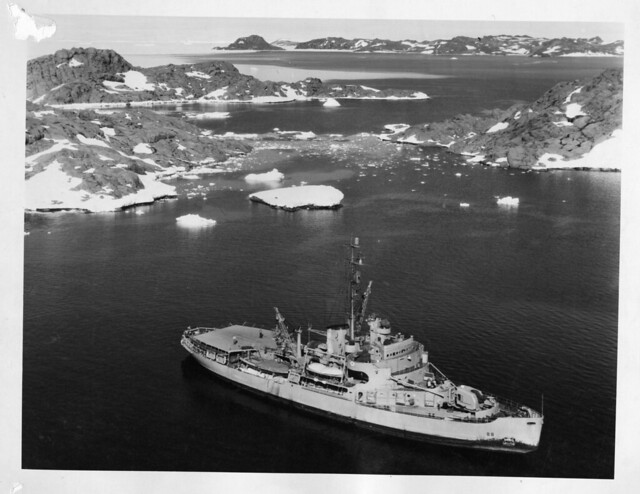What would it take for scientists to conduct research successfully in the harsh conditions of Antarctica? This question was at the heart of the United States Navy’s Operation Highjump expedition in 1946-47. The core of the expedition was to help create an Antarctic research base called Little America IV, the fourth in a series of five arctic base camps established by American researchers from 1929-1958. This included everything from testing the area's geological and meteorological conditions, to training scientists and testing equipment in the frigid temperatures. Spearheaded by Rear Admiral Gerald L. Ketchum (who led four Antarctic expeditions in his lifetime), the Highjump crew totaled 4,7000 men aboard 13 ships and 33 aircraft.
This mission was succeeded by Operation Windmill in 1947-1948, a second exploration and training endeavor led by Ketchum. The Windmill team was responsible for further testing equipment at the Little America station, in addition to doing extensive scientific surveys of the area. Moreover, 70,000 aerial photos of Antarctica were taken during Operation Highjump. To make those aerial photos useful (and able to be meaningfully reconstructed), scientists needed the context of ground control—to survey the grounds at short-range, using landmarks as reference points. This became a focus of the Windmill operation.
Among the 500 men who embarked on the Operation Windmill expedition, was Malcolm Davis, a zookeeper at the Smithsonian National Zoological Park. Davis was sent on the mission to collect penguins and leopard seals, among other animals. He traveled aboard the USS Edisto, an icebreaker ship designed to break up and navigate through ice-covered waters.
Related Collections
SIA Acc. 02-223, Robert B. Klaverkamp Antarctic Collection, c. 1947-1948, 1958
Related Resources
Air Photos of Antarctica, Syracuse University Libraries
Produced by the Smithsonian Institution Archives. For copyright questions, please see the Terms of Use.


Leave a Comment